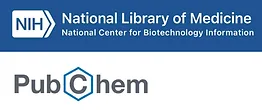AGGIORNAMENTO SCIENTIFICO IN TEMPO REALE FORNITO DA:

Most-Read Full-Text Articles
- Corticospinal excitability at rest outside of a task does not differ from task intertrial intervals in healthy adultsby Kate Bakken on 23 Luglio 2024
Human corticospinal excitability (CSE) modulates during movement, when muscles are active, but also at rest, when muscles are not active. These changes in resting motor system excitability can be transient or longer lasting. Evidence from transcranial magnetic stimulation (TMS) studies suggests even relatively short periods of motor learning on the order of minutes can have lasting effects on resting CSE. Whether individuals are able to return CSE to out-of-task resting levels during the...
- Efficacy of personalized rTMS to enhance upper limb function in subacute stroke patients: a protocol for a multi-center, randomized controlled studyby Ho Seok Lee on 18 Luglio 2024
BACKGROUND: Repetitive transcranial magnetic stimulation (rTMS) is widely used therapy to enhance motor deficit in stroke patients. To date, rTMS protocols used in stroke patients are relatively unified. However, as the pathophysiology of stroke is diverse and individual functional deficits are distinctive, more precise application of rTMS is warranted. Therefore, the objective of this study was to determine the effects of personalized protocols of rTMS therapy based on the functional reserve of...
- Local neuronal sleep after stroke: The role of cortical bistability in brain reorganizationby Caroline Tscherpel on 17 Luglio 2024
CONCLUSION: In summary, we found evidence that transient effects of sleep-like slow waves and cortical bistability within ipsilesional M1 resulting in excessive inhibition may interfere with functional reorganization, leading to a less favorable functional outcome post-stroke, pointing to a new therapeutic target to improve recovery of function.
- The Simultaneous Application of Transcranial Magnetic Stimulation and Virtual Reality to Treat Cognitive Deficits Among Stroke Patients: A Randomized Controlled Trialby Priya Chauhan on 16 Luglio 2024
Background and objective Integrating virtual reality (VR) and transcranial magnetic stimulation (TMS) offers a promising strategy for stroke rehabilitation, as it specifically focuses on reorganizing neural connections and activating brain activity in the cortex. The main goal is to create equitable connections between the brain's two hemispheres to enhance the execution of voluntary movements by stimulating the central executive network (CEN) to strengthen both motor and cognitive abilities....
- Neuroinflammatory activation in sensory and motor regions of the cortex is related to sensorimotor function in individuals with low back pain maintained by nociplastic mechanisms: A preliminary proof-of-concept studyby Muath A Shraim on 15 Luglio 2024
CONCLUSION: This preliminary proof-of-concept study suggests that neuroinflammation in back regions of S1/M1 in individuals with nociplastic LBP could plausibly explain some characteristic features of this LBP phenotype.
- Permutation conditional mutual information to quantify TMS-evoked cortical connectivity in disorders of consciousnessby Zhibin Zhao on 10 Luglio 2024
Objective.To improve the understanding and diagnostic accuracy of disorders of consciousness (DOC) by quantifying transcranial magnetic stimulation (TMS) evoked electroencephalography connectivity using permutation conditional mutual information (PCMI).Approach.PCMI can characterize the functional connectivity between different brain regions. This study employed PCMI to analyze TMS-evoked cortical connectivity (TEC) in 154 DOC patients and 16 normal controls, focusing on optimizing parameter...
- Modern neurophysiological techniques indexing normal or abnormal brain agingby Angelo Pascarella on 7 Luglio 2024
Brain aging is associated with a decline in cognitive performance, motor function and sensory perception, even in the absence of neurodegeneration. The underlying pathophysiological mechanisms remain incompletely understood, though alterations in neurogenesis, neuronal senescence and synaptic plasticity are implicated. Recent years have seen advancements in neurophysiological techniques such as electroencephalography (EEG), magnetoencephalography (MEG), event-related potentials (ERP) and...
- A neural signature for brain compensation in stroke with EEG and TMS: Insights from the DEFINE cohort studyby Guilherme Jm Lacerda on 6 Luglio 2024
CONCLUSION: Our findings indicate a potential neural signature of brain compensation in which lower frequencies of EEG power are increased in the lesioned hemisphere, and lower corticospinal excitability is also increased in the non-lesioned hemisphere. We discuss the meaning of these findings in the context of motor recovery in stroke.
- Increased anti-correlation between the left dorsolateral prefrontal cortex and the default mode network following Stanford Neuromodulation Therapy (SNT): analysis of a double-blinded, randomized, sham-controlled trialby Niharika Gajawelli on 6 Luglio 2024
SNT is a high-dose accelerated intermittent theta-burst stimulation (iTBS) protocol coupled with functional-connectivity-guided targeting that is an efficacious and rapid-acting therapy for treatment-resistant depression (TRD). We used resting-state functional MRI (fMRI) data from a double-blinded sham-controlled randomized controlled trial¹ to reveal the neural correlates of SNT-based symptom improvement. Neurobehavioral data were acquired at baseline, post-treatment, and 1-month follow-up. Our...
- A comparison of techniques to determine active motor threshold for transcranial magnetic stimulation researchby Jonathan P Beausejour on 5 Luglio 2024
The determination of active motor threshold (AMT) is a critical step in transcranial magnetic stimulation (TMS) research. As AMT is frequently determined using an absolute electromyographic (EMG) threshold (e.g., 200 µV peak-to-peak amplitude), wide variation in EMG recordings across participants has given reason to consider relative thresholds (e.g., = 2 × background sEMG) for AMT determination. However, these approaches have not been systemically compared. Our purpose was to compare AMT...
- Individualized time windows enhance TMS-EEG signal characterization and improve assessment of cortical function in schizophreniaby Gema Mijancos-Martínez on 5 Luglio 2024
Transcranial magnetic stimulation and electroencephalography (TMS-EEG) recordings are crucial to directly assess cortical excitability and inhibition in a non-invasive and task-free manner. TMS-EEG signals are characterized by TMS-evoked potentials (TEPs), which are employed to evaluate cortical function. Nonetheless, different time windows (TW) have been used to compute them over the years. Moreover, these TWs tend to be the same for all participants omitting the intersubject variability....
- Densely sampled stimulus-response map of human cortex with single pulse TMS-EEG and its relation to whole brain neuroimaging measuresby Yinming Sun on 1 Luglio 2024
Large-scale networks underpin brain functions. How such networks respond to focal stimulation can help decipher complex brain processes and optimize brain stimulation treatments. To map such stimulation-response patterns across the brain non-invasively, we recorded concurrent EEG responses from single-pulse transcranial magnetic stimulation (i.e., TMS-EEG) from over 100 cortical regions with two orthogonal coil orientations from one densely-sampled individual. We also acquired Human Connectome...
- An Efficient Pulse Circuit Design for Magnetic Stimulation with Diversified Waveforms and Adjustable Parametersby Xiao Fang on 27 Giugno 2024
As a noninvasive neuromodulation technique, transcranial magnetic stimulation (TMS) has important applications both in the exploration of mental disorder causes and the treatment of mental disorders. During the stimulation, the TMS system generates the intracranial time-varying induced E-field (E-field), which alters the membrane potential of neurons and subsequently exerts neural regulatory effects. The temporal waveform of the induced E-fields is directly related to the stimulation effect. To...
- Weak grip strength among persons with multiple sclerosis having minimal disability is not related to agility or integrity of the corticospinal tractby Evan G MacKenzie on 27 Giugno 2024
CONCLUSIONS: In persons with MS having low disability, grip strength (normalized to body mass) was reduced despite having intact agility and walking performance. Grip strength was not associated with corticospinal excitability or inhibition, suggesting peripheral neuromuscular function, low physical activity or fitness, or other psychosocial factors may be related to weakness. Low grip strength is a putative indicator of early neuromuscular aging in persons with MS having mild disability and...
- Tactile versus motor imagery: differences in corticospinal excitability assessed with single-pulse TMSby Marina Morozova on 27 Giugno 2024
Tactile Imagery (TI) remains a fairly understudied phenomenon despite growing attention to this topic in recent years. Here, we investigated the effects of TI on corticospinal excitability by measuring motor evoked potentials (MEPs) induced by single-pulse transcranial magnetic stimulation (TMS). The effects of TI were compared with those of tactile stimulation (TS) and kinesthetic motor imagery (kMI). Twenty-two participants performed three tasks in randomly assigned order: imagine finger...

















